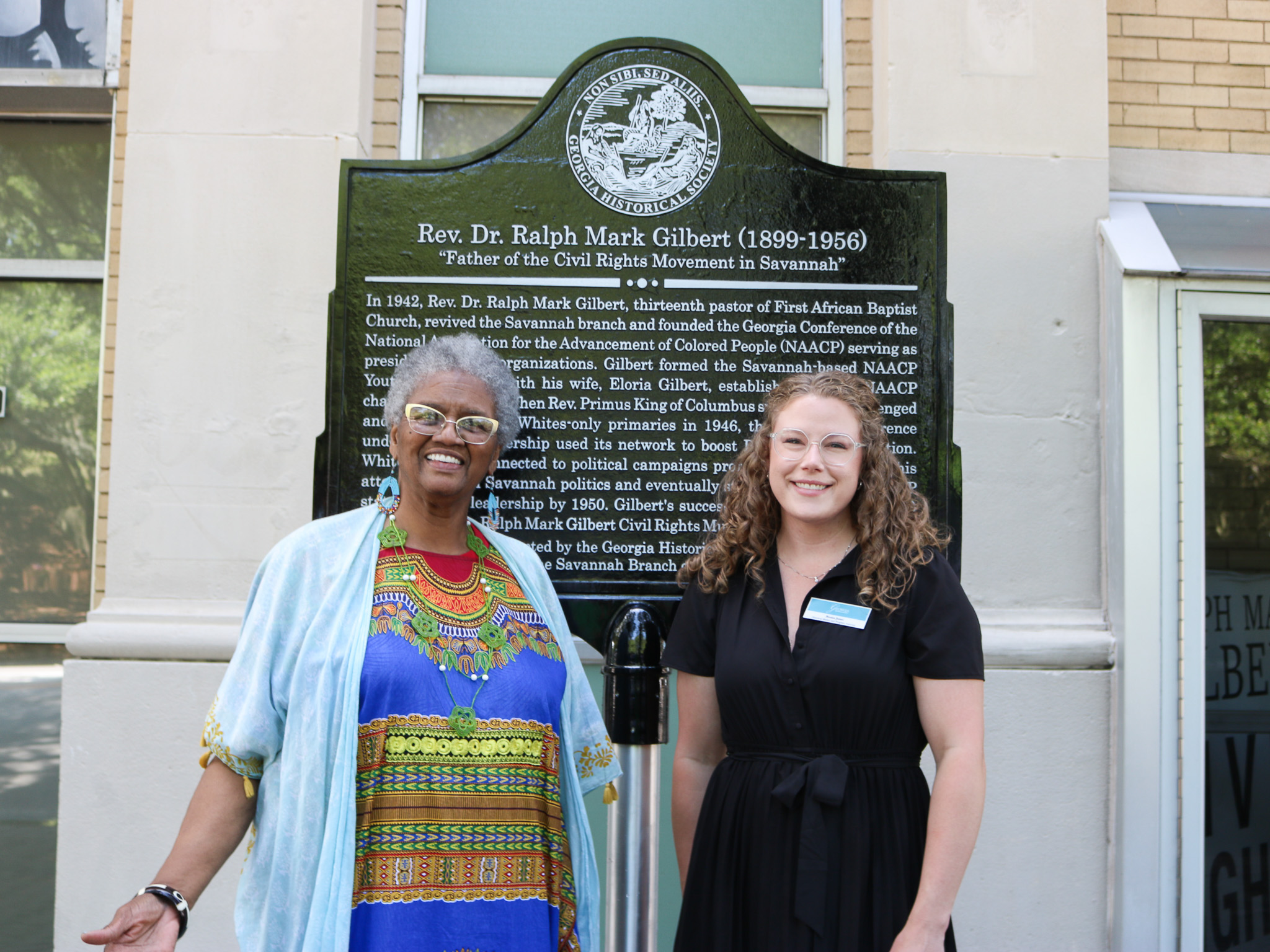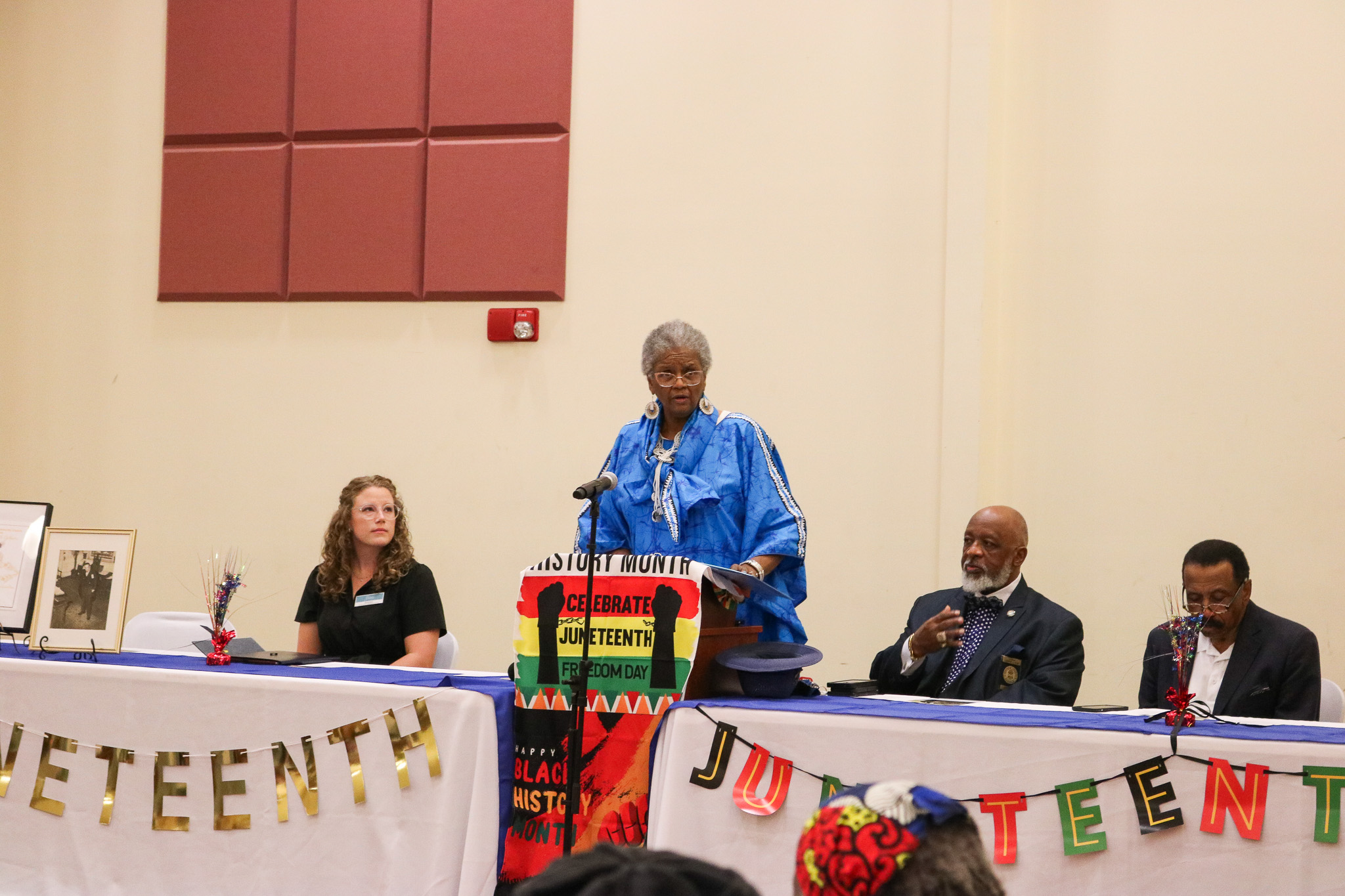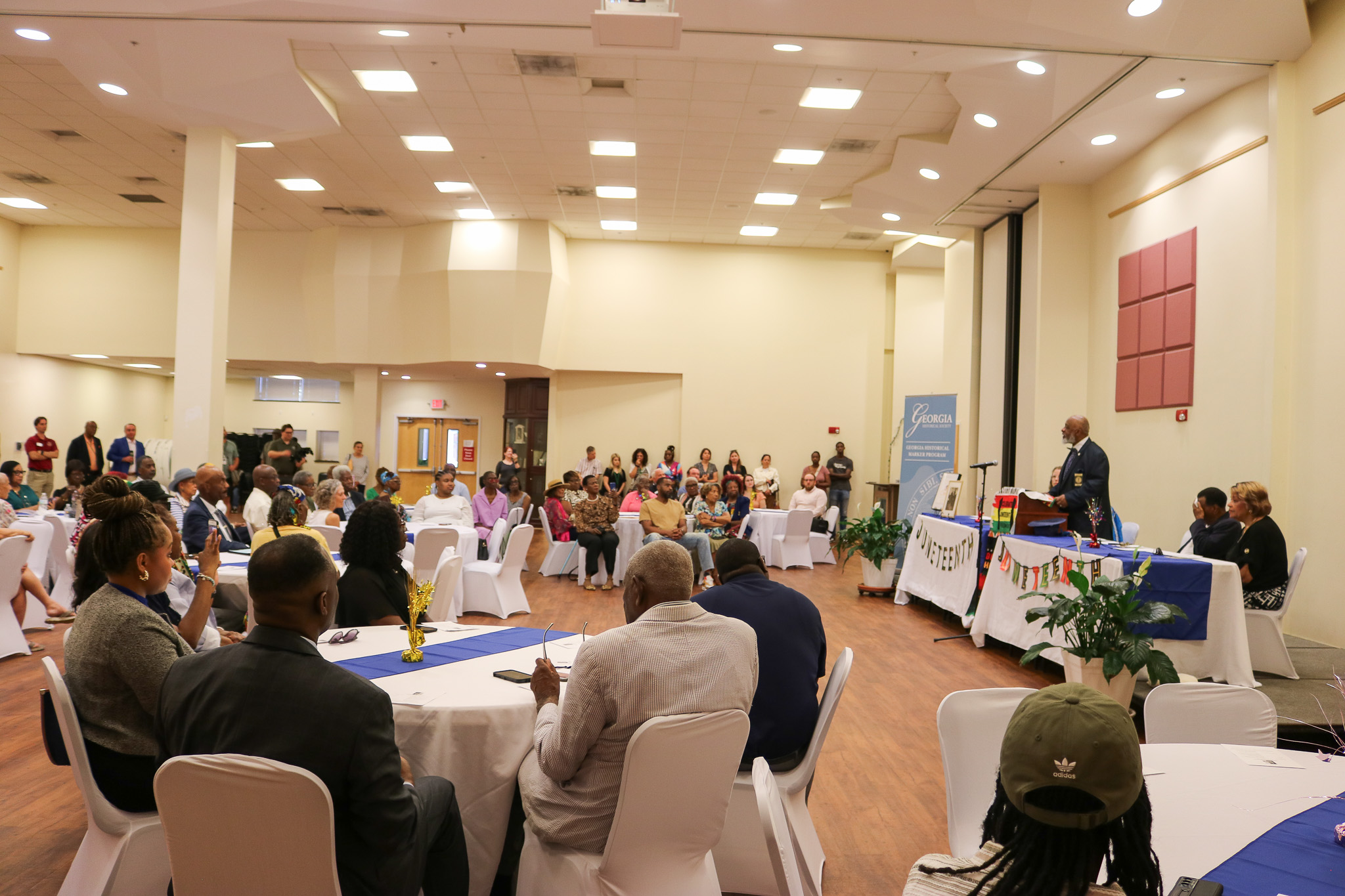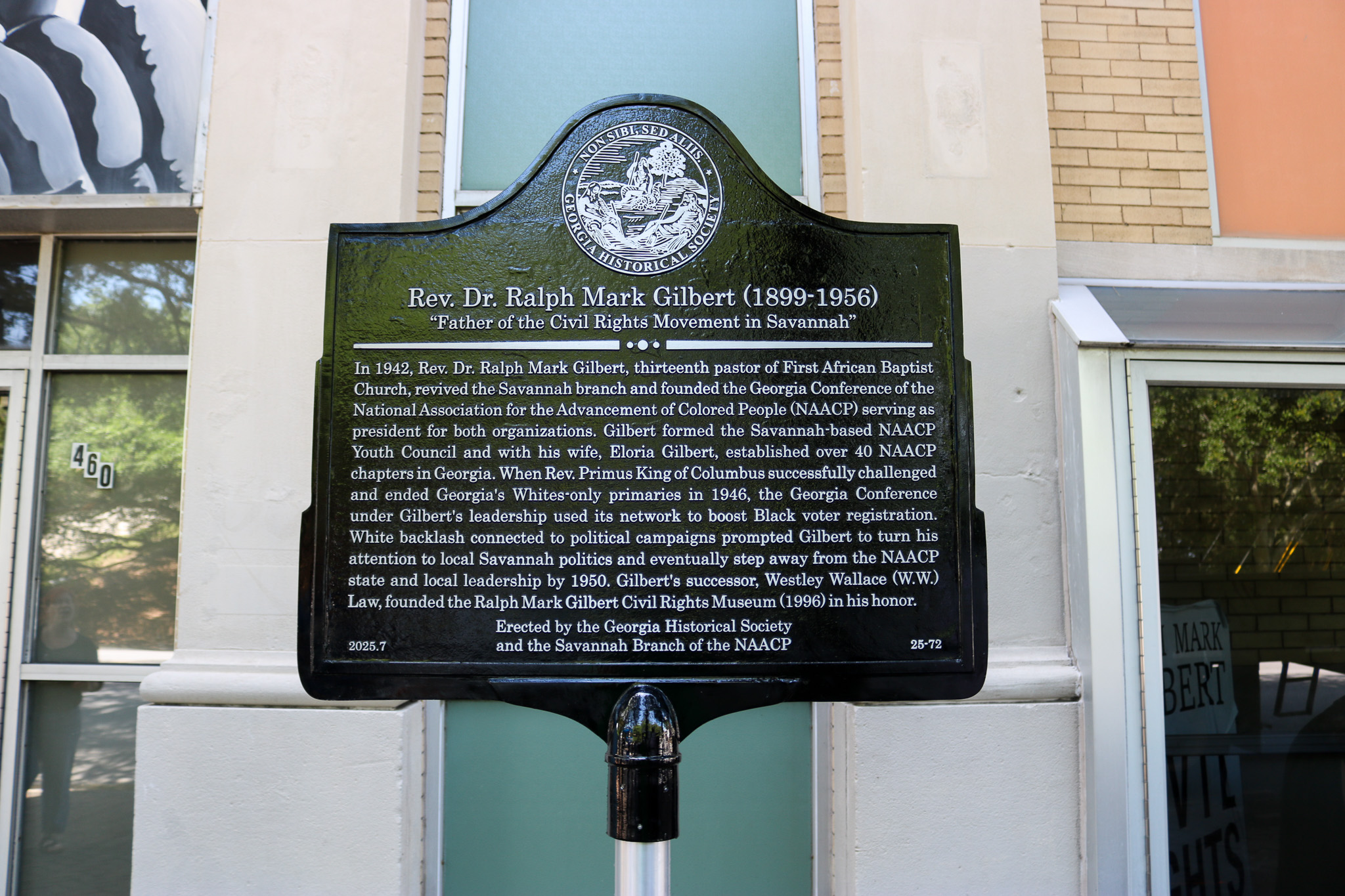
Savannah, GA, June 18, 2025 — The Georgia Historical Society (GHS) dedicated a new historical marker on June 18, 2025, in Savannah commemorating Rev. Dr. Ralph Mark Gilbert (1899–1956), widely regarded as the “father of the civil rights movement in Savannah.” The marker was unveiled in partnership with the Savannah Branch of the NAACP, and commemorates the leadership and advocacy that helped mobilize Savannah’s Black community and drive the city’s civil rights movement.
A Baptist minister and civic leader, Gilbert became pastor of First African Baptist Church in 1939 and led the Savannah Branch of the NAACP during the 1940s. His leadership spurred major voter registration efforts, local desegregation initiatives, and the growth of NAACP membership across Georgia. He also helped organize the NAACP State Conference of Branches and mentored future civil rights leaders.
“Savannah and its Black Community were important players in Georgia’s Civil Rights Movement, and Rev. Dr. Ralph Mark Gilbert was integral to the movement’s beginnings and growth in Savannah,” said Breana James, Historical Marker and Program Associate, Georgia Historical Society. “It is exciting to share the impact of Gilbert’s efforts through this historical marker and to place it at an impactful community center that is named in his honor.”
“The Savannah Branch of the NAACP was delighted to join with the Georgia Historical Society in sponsoring the historical marker that acknowledges the work of Ralph Mark Gilbert and the Savannah Branch of the NAACP in Georgia to make it a better place for all its citizens,” said Albert J. Scott, retired Chairman, Savannah Board of Commissioners, and former President, Savannah Branch of the NAACP.
Opened in 1996, the Ralph Mark Gilbert Civil Rights Museum—the site of the new historical marker—recognizes Gilbert’s contributions and preserves the city’s African American history. Housed in the historic Wage Earners Bank building, the museum stands as a symbol of the fight for justice and Black economic empowerment.
“The impact of Dr. Gilbert's marker represents an educational resource for the Savannah community and the general public,” said Vaughnette Goode-Walker, Director, Ralph Mark Gilbert Civil Rights Museum. “The marker will bring more people into the museum because of its location on the well-worn path of Martin Luther King Jr. Boulevard that is travelled by both locals and visitors from all over the world. The Gilbert marker is a lasting tribute to Savannah's Civil Rights Movement and the important role of the local chapter of the NAACP.”



The marker dedication took place at the Ralph Mark Gilbert Civil Rights Museum. Speakers included Vaughnette Goode-Walker, Director, Ralph Mark Gilbert Civil Rights Museum; Albert J. Scott, retired Chairman, Savannah Board of Commissioners, and former President, Savannah Branch of the NAACP; Chester A. Ellis, Chairman, Chatham County Board of Commissioners; The Honorable Judge Quintress J. Gilbert, Juvenile Court Judge, Bibb County, Congressional District 8; and Breana James, Historical Marker and Program Associate, Georgia Historical Society.
The marker text reads:
Rev. Dr. Ralph Mark Gilbert (1899-1956)
“Father of the Civil Rights Movement in Savannah”
In 1942, Rev. Dr. Ralph Mark Gilbert, thirteenth pastor of First African Baptist Church, revived the Savannah branch and founded the Georgia Conference of the National Association for the Advancement of Colored People (NAACP) serving as president for both organizations. Gilbert formed the Savannah-based NAACP Youth Council and with his wife, Eloria Gilbert, established over 40 NAACP chapters in Georgia. When Rev. Primus King of Columbus successfully challenged and ended Georgia’s Whites-only primaries in 1946, the Georgia Conference under Gilbert’s leadership used its network to boost Black voter registration. White backlash connected to political campaigns prompted Gilbert to turn his attention to local Savannah politics and eventually step away from the NAACP state and local leadership by 1950. Gilbert’s successor, Westley Wallace (W.W.) Law, founded the Ralph Mark Gilbert Civil Rights Museum (1996) in his honor.
Erected by the Georgia Historical Society and the Savannah Branch of the NAACP
For more information about the Rev. Dr. Ralph Mark Gilbert (1899-1956) historical marker dedication or the Georgia Historical Society marker program, please contact Breana James, Historical Marker and Program Associate, at 912.651.2125 ext. 122, or bjames@georgiahistory.com.
###
ABOUT THE GEORGIA HISTORICAL SOCIETY
The Georgia Historical Society (GHS) is the premier independent statewide institution responsible for collecting, examining, and teaching Georgia and American history. GHS houses the oldest and most distinguished collection of materials related exclusively to Georgia history in the nation.
To learn more visit georgiahistory.com.
ABOUT THE GEORGIA HISTORICAL MARKER PROGRAM
The Georgia Historical Marker Program is an important part of the Georgia Historical Society’s (GHS) statewide educational mission. Through a public-private partnership with the State of Georgia, GHS is responsible for erecting new historical markers and maintaining more than 2,000 markers installed by the State prior to the program’s privatization in 1998. Online mapping tools allow users to explore themed marker trails and design custom driving routes. Visit georgiahistory.com for more ways to use Georgia’s historical markers and experience history where it happened.
